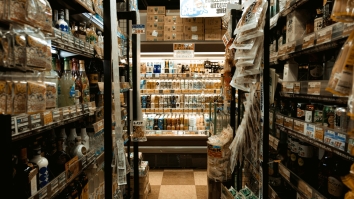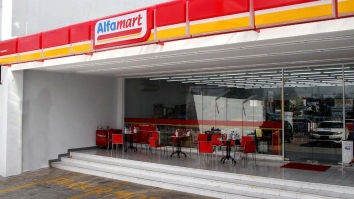The Changing Face of Grocery Shopping in Singapore
By Roc HarryThe Covid-19 pandemic has driven the market and led to major shifts in consumer spending in the past 12 months. The grocery sector is one to watch, as more than half (54%) of Singaporeans spent more on groceries in the past 12 months, according to Worldpay from FIS’ 2021 Generation Pay research. The grocery boom is poised to continue, with 9 in 10 consumers expecting to spend the same or more on groceries in the upcoming year.
The momentum towards online ordering, pickup and delivery of groceries also accelerated virtually overnight. Online grocery shopping has been around in Singapore for some time – with Redmart being one of the pioneers – however the pandemic has broadened its appeal to the majority of consumers. Traffic on RedMart increased 11 times over the circuit breaker period. Major players such as NTUC FairPrice continue to invest in their online platforms, while smaller gourmet providers are starting to enter the e-grocery scene.
As grocery retailers ride the e-commerce wave, they must look at tangible ways to adopt a sustainable omnichannel strategy that caters to evolving consumer habits and expectations, and at the same time employ new technologies that seamlessly connect the online and in-store shopping experience.
Omnichannel is the new business-as-usual
Early on, brick-and-mortar grocery stores were already using technologies such as self-checkout and “scan and go” to reinvent the shopping experience. With the pandemic putting the spotlight on speed and safety, consumers across all generations are now more open to downloading apps and trying out delivery and pickup schemes to minimize interactions and eliminate the need to stand in line. Today, a shopper’s grocery journey may start online at home, ultimately resulting in a transaction via an in-store visit, click-and-collect or delivery.
Providing self-collect options is essential, as there are many shoppers who prefer to order in advance and have their groceries waiting for them at a designated counter. This will allow them to check their products and the freshness of the fresh produce that they ordered, reducing the propensity for refunds or friction in the exchange process.
With the rapid shift to online grocery shopping, consumers are spoilt for choice and their expectations are only rising. Businesses must continue to find creative ways to reach their customers digitally. As an example, an interesting tactic undertaken by several traditional wet market grocers in Singapore is to use social media and live streaming platforms to sell their fresh produce, meats and vegetables, and engage with customers. Customers can interact with the sellers and ask them more about their products, as they would in an actual wet market. This helps to recreate the face-to-face experience of being in store that many have missed throughout the pandemic.
Such omnichannel approaches are helping grocers reorient to today’s reality. The ability to deliver secure, consistent, and efficient customer experiences seamlessly across an expanding kaleidoscope of touchpoints is a critical benchmark for success.
Bridging gaps with delivery
Going online isn’t as simple as just having a website presence. A true omnichannel effort requires the various sales channels and touchpoints to be matched with the right logistics capabilities (including payment, shipping, and delivery) that will create a seamless customer experience, while minimizing costs and security risks.
This hasn’t always been an easy feat, especially during the early stage of the pandemic where online orders surged in the wake of lockdown measures. There were multiple reports of consumers having difficulties securing delivery slots for their online grocery orders. Grocery retailers faced a shortage in resources, from manpower to couriers and supplies, leaving them struggling to meet the increased delivery demand.
To satisfy the demand for seamless online-offline experiences, grocery retailers must prioritize their logistics and supply chain capabilities. This means choosing the right logistics partners, from the top of the supply chain, all the way through to the consumer’s doorstep. They also need to plan for the influx in shipping requests and pickup schemes like click-and-collect. ‘Click and collect’ is a popular purchasing method amongst the younger generations, with 46% of Gen Z and 30% of Gen Y planning to use it in the next 12 months.
Delivery speed is also fast becoming a real differentiator. Launched in 2015, HappyFresh which currently operates in Indonesia, Thailand and Malaysia promises grocery delivery in one hour. In Singapore, Amazon Fresh provides free 2-hour same day delivery for orders above a certain amount. GrabSupermarket, which launched earlier this year in partnership with the HAO supermarket chain, offers next day delivery, citing the need to “meet a rapidly growing market of consumers who enjoy the speed and convenience of online grocery shopping”.
Smart payments are invisible payments
When it comes to grocery shopping, shoppers are looking for a fast and convenient experience, and the need for speed extends to the payment process. The pandemic has accelerated the shift from cash to online and contactless payment methods. 80% of Singaporean consumers said contactless payment is easier and more convenient, as seen in the Generation Pay research.
Even though checkout lines no longer inspire shopper dread, customers are still looking for increased speed at the physical point of sale. Seamless checkout expectations, driven by a new generation of digital services, mean shoppers expect faster, easier checkout every time. Secure card acceptance, contactless payments, seamless reward integration and acceptance of digital wallets represent a new baseline. For shoppers getting their groceries online, implementing payment features such as one-click payments can help to significantly cut the time it takes for them to make the purchase. Optimizing one’s payments strategy to include such “invisible” payment technologies at checkout will be crucial as the merging of online and offline continues.
The way forward
The pandemic has placed grocery’s transformation on an accelerated path. The grocery shopping experience is driven by consumer expectations for on-demand, personalized services and fast and simple payments. Retailers need to rise to the challenge of elevated customer expectations in order to set themselves up for success over the next decade of grocery’s evolution.
To remain competitive, we might also see local grocery retailers adopt new business models such as creating their own marketplaces that connect suppliers directly to consumers for better prices, similar to what Amazon Fresh is doing.
Retailers in Singapore must also continue to innovate for the long-term. For instance, the integration of interactive voice into the omnichannel fabric, the introduction of 5G high-speed networks and the leveraging of data-driven insights with machine learning and AI will demand next-level competencies and help grocery retailers reinvent for the future.
























 Advertise
Advertise








